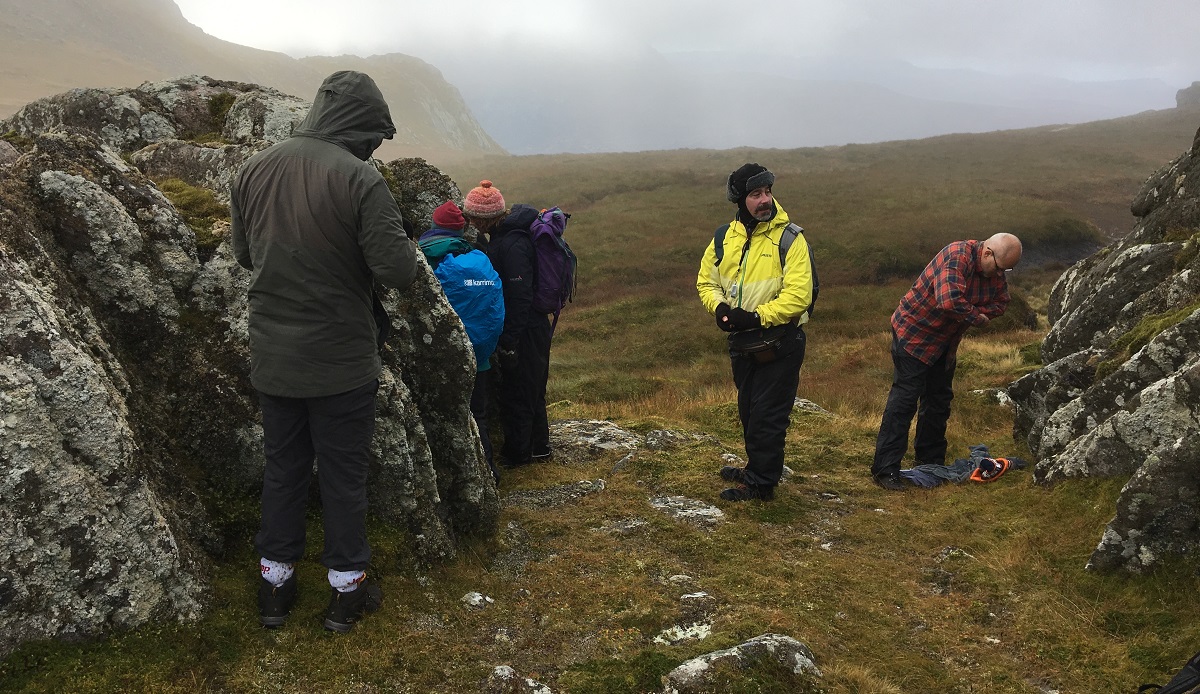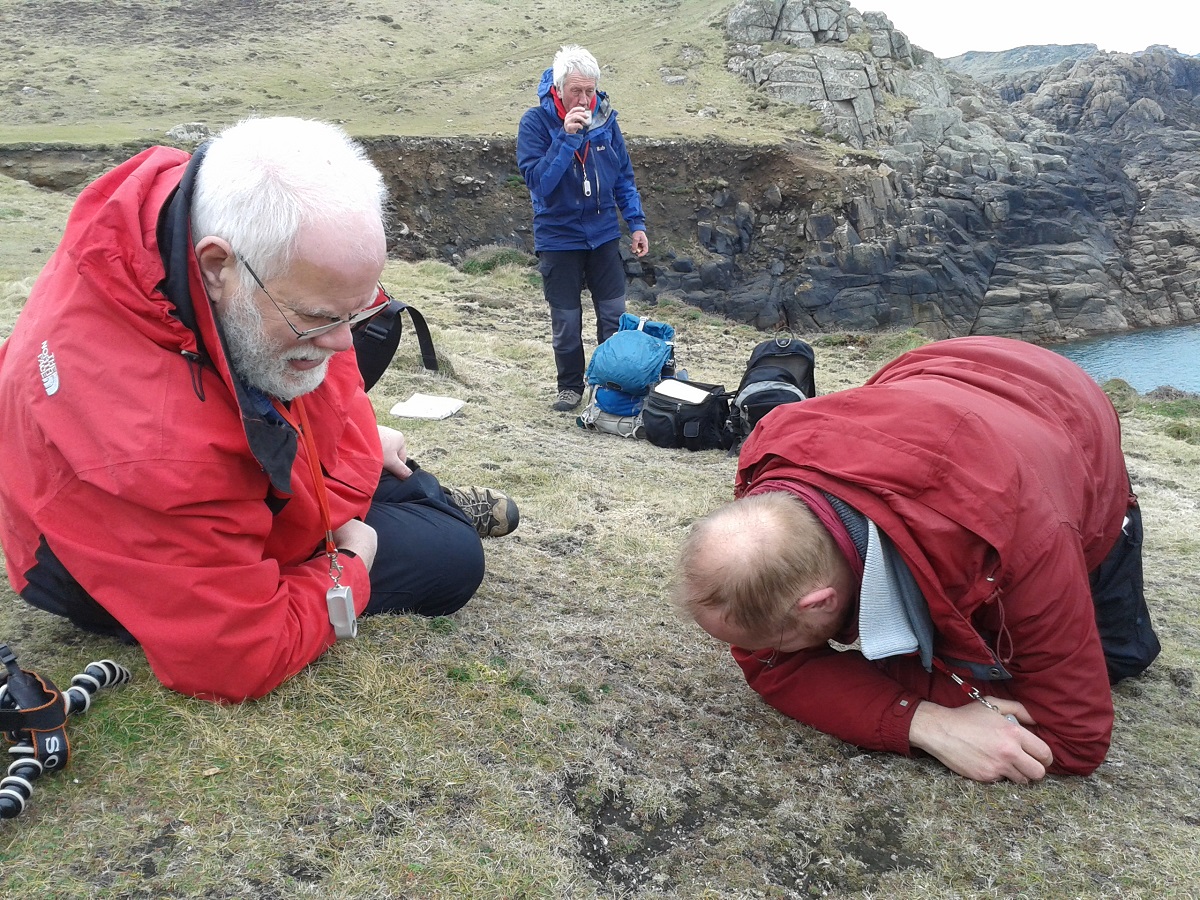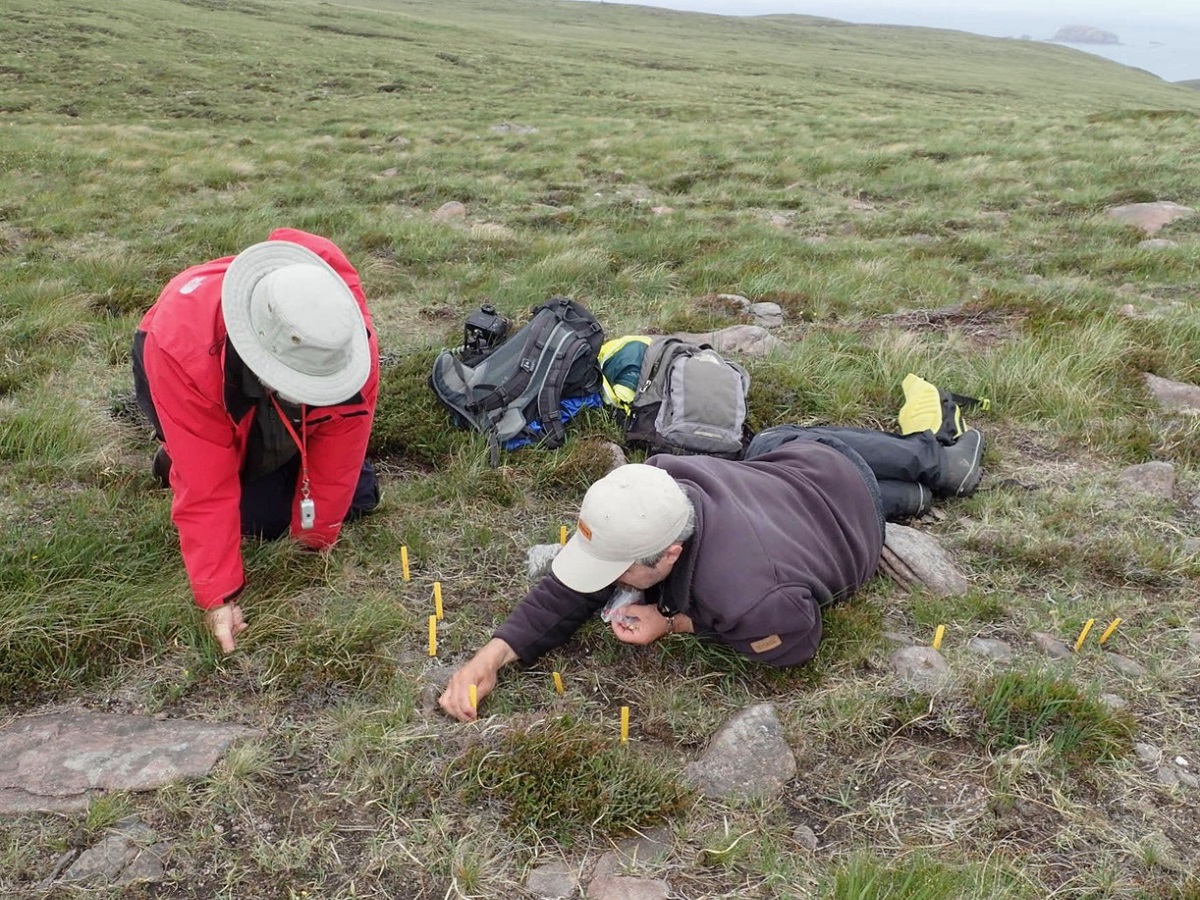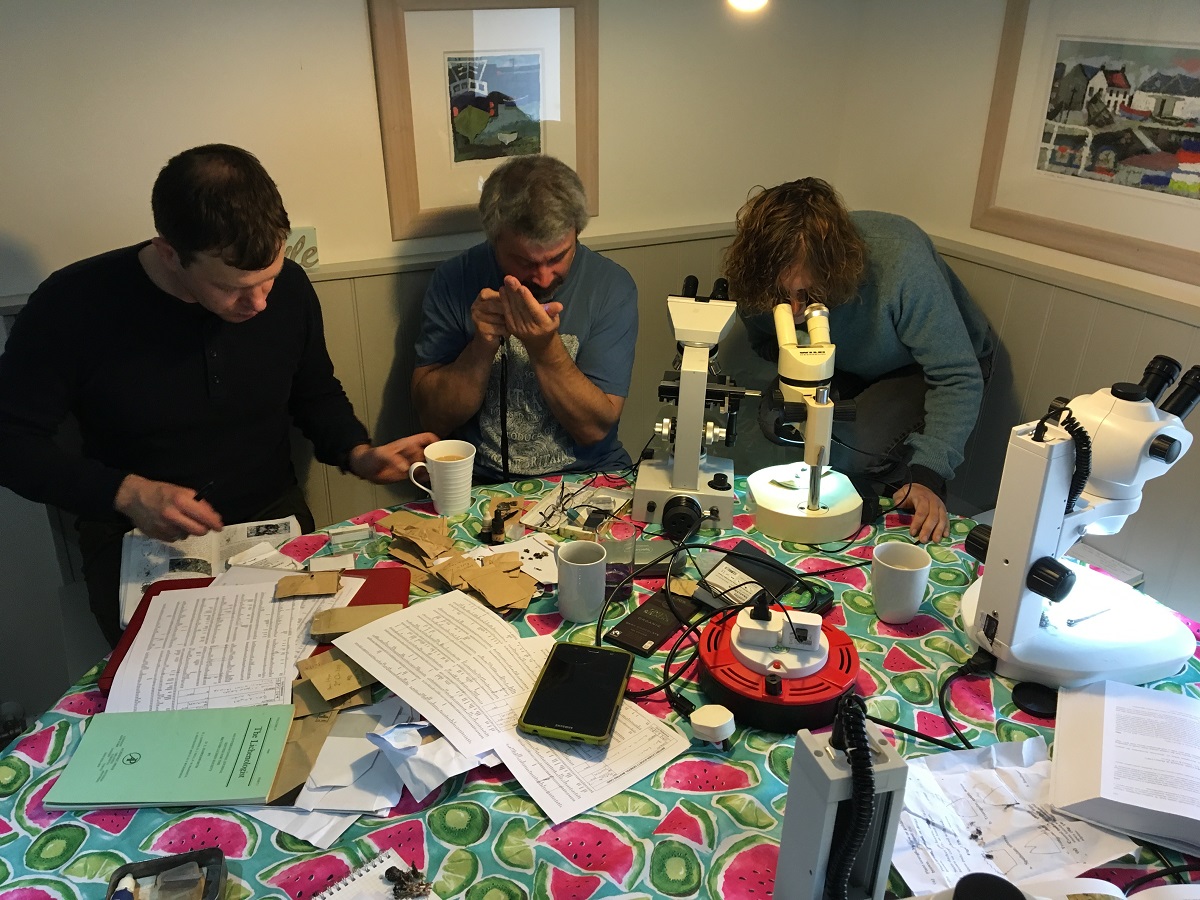
The Lost and Found Fungi (LAFF) project was a volunteer / citizen science-based conservation project delivered between 2014 – 2020 by RBG Kew, in partnership with the British Mycological Society, the British Lichen Society and funded by the Esmée Fairburn Foundation. It aimed to increase awareness, recording, and knowledge of 100 rarely-recorded fungi in the UK (LAFF100), which included a suite of lichen species. At the same time, the project promoted knowledge-sharing, skills, and engagement with rarely recorded species amongst the UK’s amateur fungus (& lichen) recording community.
The list of 100 species contained something for everyone, including distinctive mushrooms, puffballs, brackets, smut and rust fungi, tiny cup fungi, leaf-spot parasites, lichenised fungi, and more. These could be found in many different habitats, from dune systems to mountain plateaus, bogs, calcareous marshes, ancient woodland, orchards, or urban areas and gardens. The LAFF species were also selected based on the following criteria:
- Species that had not been recorded in the UK for over 50 years.
- Species were only known from only a few sites.
- Species new to science, alongside new (potentially invasive) arrivals.
- Species of current conservation concern.
- Species restricted to rare plants and habitats.
This project encouraged people to look out for these species in their areas, to check sites of historical records, and survey known sites. LAFF also joined recording groups and individuals in their surveys across the UK. Here, a series of British Lichen Society excursions were organised throughout the LAFF project, where these field trips had a strong focus on recording and target species, balanced with expert training available to beginners and intermediates.
West Cornwall: November 2015
A survey to refind one of the only two British populations of Porina sudetica; it was unsuccessful (the habitat is now probably overgrown) but other target species were found including the largest British population of the lichenicolous species Lichenochora epifulgens, a parasite of the Endangered sand-dune lichen Gyalolechia (Fulgensia) fulgens. A further search for the Porina the following year was also unsuccessful.
Scilly Isles: March 2016
This project was combined with an extension of an ecological project funded by the BLS in 2014 to survey Heterodermia species on the islands. Holger Thüs wanted to search for new sites for H. leucomela and H. propagulifera and re-check populations previously seen. Material was also needed to confirm that British material named H. propagulifera is the same taxon as the widespread tropical species. The trip was populated with two professional scientists, Paul Cannon (Royal Botanic Gardens, Kew) and Holger Thüs (Natural History Museum, London); two part-time lichenologists, Graham Boswell and Maxine Putnam; two intermediate amateurs, Catherine (SharpEyes) Tregaskes and Fay Newbery; and two lichen apprentices from the recent Making the Small Things Count project run by PlantLife and supported by the BLS in the South West of England, Adam Smith and David Brabban. Full account can be found in the Summer Bulletin here.

Holger Thüs, Paul Cannon and Graham Boswell. Holger is counting Heterodermia on Bryher. (c) Fay Newbery
Sutherland: June 2016
The species targeted were Lecanora achariana, Umbilicaria spodochroa, Siphula ceratites, Lobothallia melanaspis, Hypogymnia vittata and a fungus Tulostoma niveum. The six lichenologists included Paul Cannon (Royal Botanic Gardens, Kew), John Douglass, a freelance field lichenologist, Steve Price (an amateur lichenologist and British Lichen Society field meetings organiser) Kristine Bogomazova (PhD student in lichen taxonomy at Royal Botanic Gardens, Edinburgh), Sally Ward from Scottish Natural Heritage, a recent attendee at the Kindrogan Field Studies Council lichen course and Heather Paul, an intermediate amateur. Full account can be found in the Winter 2016 Bulletin here.

John Douglass and Paul Cannon counting Siphula ceratites, Sutherland LAFF 2016 (c) Heather Paul
Lanarkshire and Dumfries: August 2017
A small survey of the mine spoil heaps at Leadhills and Wanlockhead, successfully refinding the lichen Gyalidea roseola at one of its only two known British sites and adding two further locations, one local to the original record and the other from an earlier survey at Malham, Yorkshire.
Angus: September 2017
An expedition to Glen Esk to search for perhaps the rarest fungus in Britain – Dacampia rhizocarpicola, a parasite of the riverine lichen Rhizocarpon lavatum and only known from a single collection with containing two perithecia. The search was unsuccessful, but many other species were recorded from the Angus glens.
Eastern Cairngorms: May and August 2018
Refinding the lichen parasite Thamnogalla crombiei (on the montane vagrant lichen Thamnolia vermicularis) in two locations, with unsuccessful searches in several other locations including Cumbria and Cadair Idris.
Sutherland: September – October 2019
The primary purpose of the expedition was to re-find the rare lichen Bryoria tenuis. This lichen’s only known site in Britain and Ireland is the summit rocks of Ben Loyal, about six miles from the northern coast of Scotland. The LAFF funding had a mentoring aspect: the trip was organised to support younger lichenologists to gain experience in the field and learn from the veterans. The group consisted of Joe Beale, Paul Cannon, Brian and Sandy Coppins, John Douglass, Jenny Ford, Caz Walker, Maddie Geddes-Barton and April Windle. We were joined for some of the trip by Dave Genney and Andy Cross. Full account can be found in the Summer 2020 Bulletin.

Lichen expert John Douglass supporting Joe Beale & Maddie Geddes-Barton during a microscope session - LAFF 2019 (c) April Windle
LAFF Project Officers: Brian Douglas (LAFF Community Fungus Survey Leader), Oliver Ellingham (LAFF Community Fungus Survey Technician), Paul Cannon (LAFF Senior Research Leader) and Martyn Ainsworth (LAFF Senior Research Leader).
References
- BLS Bulletin no. 118 – Summer 2016: Fay Newbery – Lost & Found Lichens: survey visit to the Scilly Isles, 19th – 26th March 2016 (pg. 37 – 46).
- BLS Bulletin no. 119 – Winter 2016: Heather Paul – Lost and Found lichens: visit to Sutherland 18 – 25 June 2016 (pg. 116 – 126).
- BLS Bulletin no. 126 – Summer 2020: Maddie Geddes-Barton – Searching for Bryoria tenuis in Sutherland (pg. 46 – 59).